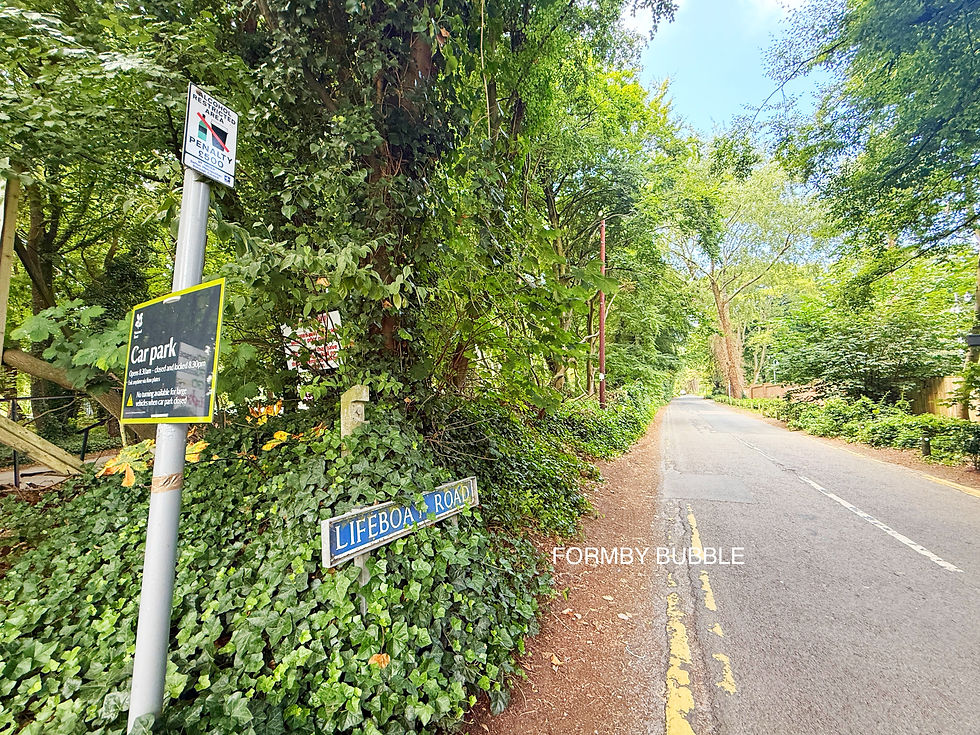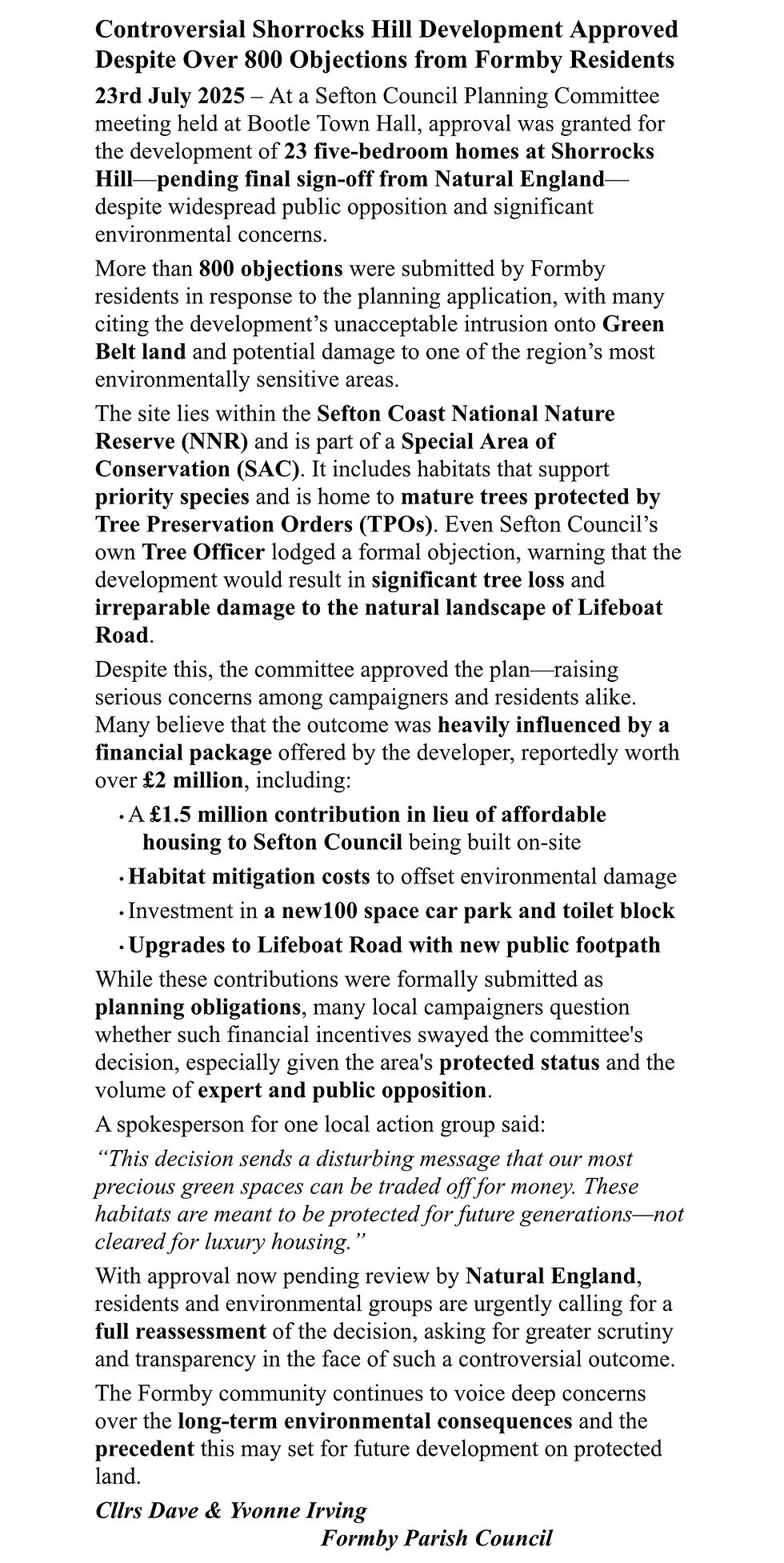Shorrocks Hill Development Approved- Despite over 800 Objections and a £2Mill Developer Package
- Formby Bubble

- Jul 25, 2025
- 3 min read

On Wednesday 23rd July 2025, Sefton Council’s Planning Committee voted to approve a highly controversial planning application to build 23 luxury five-bedroom homes at Shorrocks Hill in Formby. The decision, made at Bootle Town Hall, came despite overwhelming public opposition and expert objections. Approval is still pending final sign-off from Natural England, but the vote has sparked anger and concern across the community.
The development site lies within the Sefton Coast National Nature Reserve (NNR), a designated Special Area of Conservation (SAC), and forms part of one of the UK’s most environmentally sensitive landscapes. The area includes mature woodland, rare wildlife habitats, and trees protected by Tree Preservation Orders (TPOs). It has long been considered off-limits for major development.
Even Sefton Council’s own Tree Officer submitted a formal objection, warning that the proposals would result in significant tree loss and irreversible damage to the Lifeboat Road landscape. Environmental groups, campaigners, and residents were shocked to see the committee push ahead in spite of this.
The planning application drew over 800 formal letters of objection from local residents. Many voiced concerns about the intrusion into protected Green Belt land, the destruction of valuable wildlife habitats, the loss of mature woodland, increased pressure on local infrastructure, and the complete lack of affordable housing in the scheme. One resident commented, “What’s the point in public consultation if the voices of 800 people are ignored? It feels like this decision was made long before we even had a chance to object.”
A key point of controversy is the developer’s financial contributions to Sefton Council, which total over £2 million. These include £1.5 million in lieu of affordable housing, payments towards habitat mitigation to offset environmental damage, investment in a new 100-space public car park and toilet block, and infrastructure upgrades including a new public footpath along Lifeboat Road. While these contributions are formalised as planning obligations, many residents have questioned whether the scale of the financial package may have swayed the decision, especially given the protected status of the land.
One of the most concerning elements of the agreement is the planned widening of Lifeboat Road. As part of the deal, the developer is donating a strip of land along the edge of the Shorrocks Hill boundary to facilitate this. While the widening will allow for a new public footpath and road improvements, it will come at the cost of even more mature trees, which will need to be felled to create the extra width. Conservation groups say this is yet another blow to Formby’s fragile ecosystem. “It’s heartbreaking,” said one local supporter. “This plan will erase a corridor of beautiful, mature trees just to make way for wider roads. It’s an environmental trade-off disguised as public benefit.”
Although Sefton Council’s Planning Committee has now voted in favour, the development cannot legally proceed until Natural England grants its approval. That decision will depend on whether proposed mitigation measures are deemed sufficient to protect the rare species and habitats on site.

In the meantime, campaigners are urging for a formal ‘call-in’ by the Secretary of State for Levelling Up, Housing and Communities, which could trigger a public inquiry. There are also growing calls for greater transparency in planning decisions, particularly where large financial contributions are involved, and renewed efforts to strengthen protection of Green Belt land across Sefton.
The Formby Bubble will continue to follow this story closely as it develops. If you would like to share your views, raise awareness, or support the ongoing campaign to protect Formby’s green spaces, please email us at info@formbybubble.com or comment on our social media pages.








.jpg)




















.jpg)


The UK is considered one of the most nature-depleted countries globally, ranking in the bottom 10% of 240 nations for biodiversity intactness, with only around 50-53% of its original nature remaining, significantly lower than the global average and the recommended safe limit for biodiversity. This status is due to factors like habitat loss, unsustainable land use, invasive species, and climate change, despite efforts to address biodiversity loss through protected areas and pollution reduction.
After trying out a few different providers, I finally landed on one of the best dissertation writing services I’ve ever worked with. The experience was smooth from start to finish. The writers were qualified in my field, and their attention to detail was impressive. They handled feedback well and delivered work that passed plagiarism checks